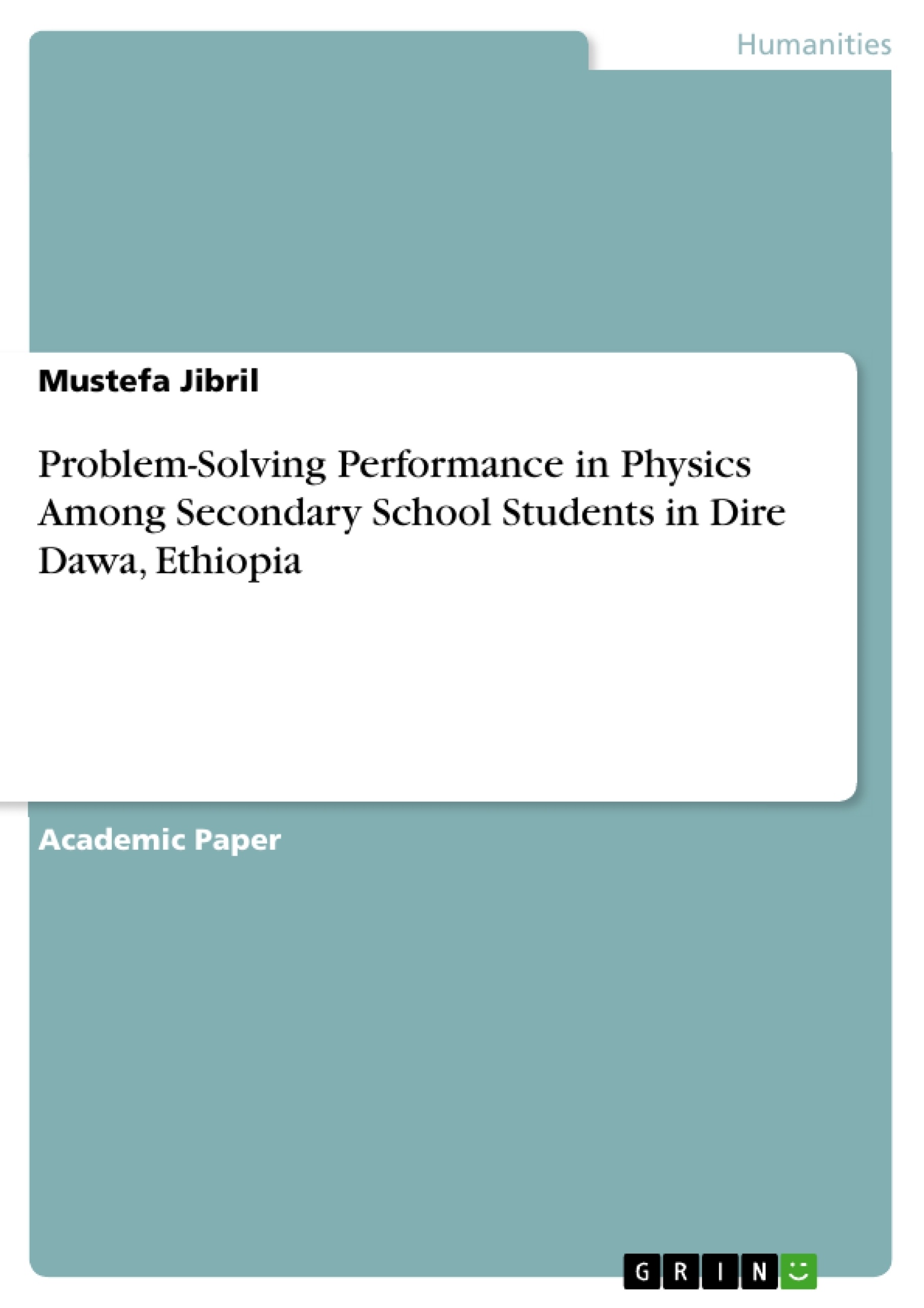The main aim of this study was to assess problem-solving performance in physics of grade 9th students. A test of reasoning was administered to a sample of 578 students. To solve the critical issues, and the general functions of physical education. The Teachers are used to solve the problems associated with the introduction of new physics, the principles, the integration of the related physical concepts related to the application of knowledge in new situations, and the assessment of students' understanding of the new physics knowledge.
Inhaltsverzeichnis (Table of Contents)
- 1. Introduction
- Methodology
- Result and Discussion
- Conclusion
- Recommendation
Zielsetzung und Themenschwerpunkte (Objectives and Key Themes)
The main objective of this study was to assess the problem-solving performance in physics among 9th-grade students, analyzing the influence of factors such as school sector and gender. The study aimed to identify significant differences in performance and explore potential contributing factors.
- Problem-solving performance in physics among secondary school students
- Influence of school sector (private vs. public) on physics problem-solving abilities
- Impact of gender on physics problem-solving performance
- Correlation between mathematical skills and physics problem-solving success
- Factors affecting student performance in physics
Zusammenfassung der Kapitel (Chapter Summaries)
1. Introduction: This introductory chapter establishes the context of the study by reviewing existing research on factors influencing physics problem-solving performance. It highlights the impact of variables like gender, prior knowledge, and metacognitive skills, and discusses the role of multiple representations in understanding physical phenomena. The chapter points out the limitations of previous studies, particularly their lack of focus on the interplay between mathematical skills and physics comprehension in Ethiopian secondary school settings, leading to the current study's motivation.
Methodology: This section details the research design and methodology employed in the study. A survey approach was used, involving a sample of 578 ninth-grade students from four secondary schools. A proportionate sampling method ensured representation across different school sectors (public and private) and genders. Data collection utilized a six-item constructed response test, with validity and reliability established through expert opinion and factor analysis. The reliability coefficient of the instrument was found to be 0.90.
Result and Discussion: This chapter presents the findings of the study using descriptive and inferential statistics. The analysis reveals significant differences in problem-solving performance based on school sector and gender. Private school students performed significantly better than their public school counterparts, with female private school students exhibiting superior performance compared to male private school students. These differences were further analyzed using t-tests, calculating Cohen's d to quantify the effect sizes. Additionally, the interaction between gender and school sector on problem-solving performance was investigated.
Schlüsselwörter (Keywords)
Problem Solving, Performance, Physics, Private school, Gender, Mathematical Skills, Secondary School Students, Ethiopia, Public School, Educational Sector
Frequently Asked Questions: Analysis of Physics Problem-Solving Performance Among Ethiopian 9th-Grade Students
What is the main objective of this study?
The study's primary objective was to evaluate the physics problem-solving skills of 9th-grade students in Ethiopia, examining the influence of school sector (public vs. private) and gender on their performance. It aimed to identify significant performance differences and explore contributing factors.
What methodology was used in this research?
The research employed a survey design, using a sample of 578 ninth-grade students from four secondary schools in Ethiopia. A proportionate sampling method ensured representation across school sectors and genders. Data was collected via a six-item constructed-response test, with validity and reliability established through expert review and factor analysis (reliability coefficient = 0.90).
What are the key themes explored in this study?
Key themes include problem-solving performance in physics among secondary school students, the influence of school sector (private vs. public) on this performance, the impact of gender, the correlation between mathematical skills and physics problem-solving success, and other factors affecting student performance in physics.
What were the main findings of the study?
The results revealed significant differences in problem-solving performance based on school sector and gender. Students in private schools performed significantly better than those in public schools. Female students in private schools outperformed male students in private schools. These differences were analyzed using t-tests, with effect sizes calculated using Cohen's d. The interaction between gender and school sector on performance was also investigated.
What are the key chapters and their content?
The study includes an introduction reviewing existing research and highlighting the study's motivation; a methodology section detailing the research design and data collection; a results and discussion chapter presenting and interpreting the findings; a conclusion summarizing the key findings; and recommendations for future research and educational practice.
What are the keywords associated with this study?
Keywords include: Problem Solving, Performance, Physics, Private school, Gender, Mathematical Skills, Secondary School Students, Ethiopia, Public School, Educational Sector.
What is the scope of this study?
This study focuses specifically on 9th-grade students in Ethiopia and analyzes their physics problem-solving skills within the context of school sector and gender. It highlights the importance of understanding these factors to improve physics education in this specific setting.
- Citation du texte
- Mustefa Jibril (Auteur), 2021, Problem-Solving Performance in Physics Among Secondary School Students in Dire Dawa, Ethiopia, Munich, GRIN Verlag, https://www.grin.com/document/1127995



